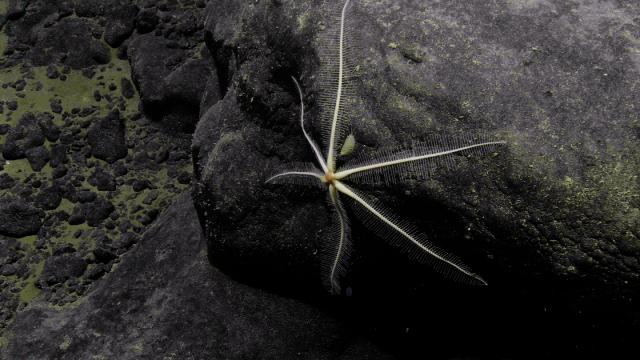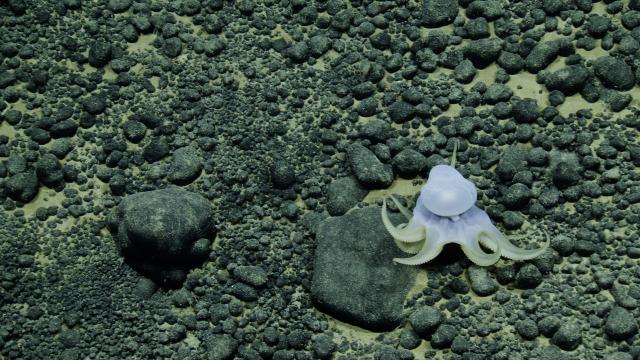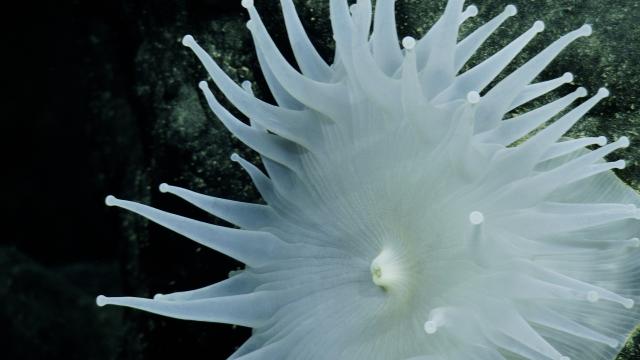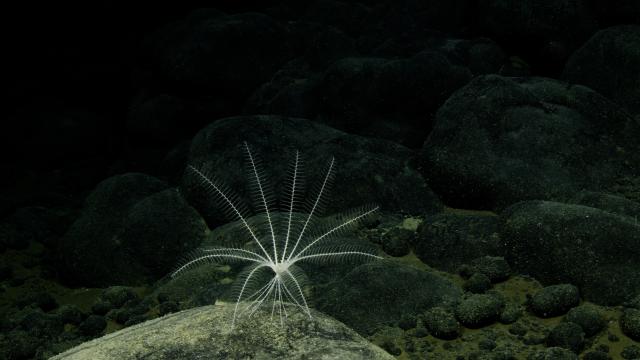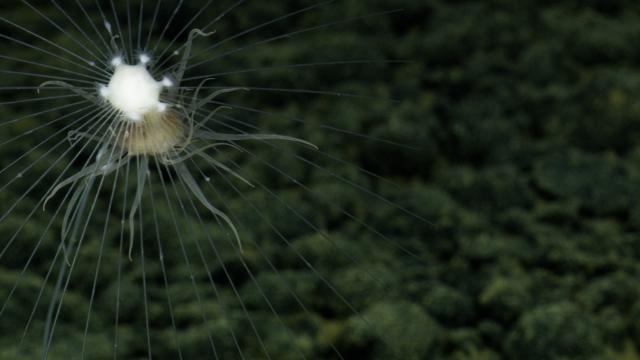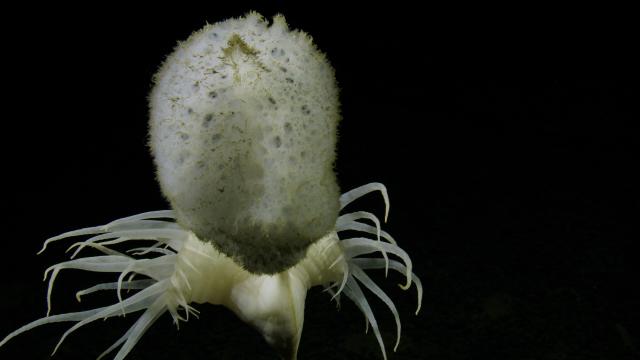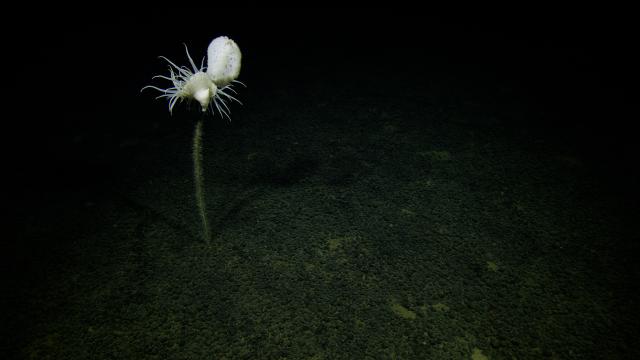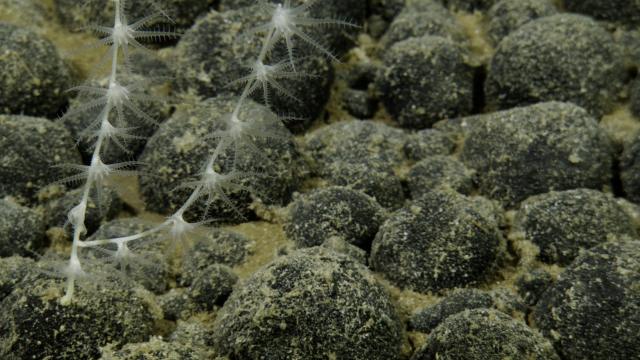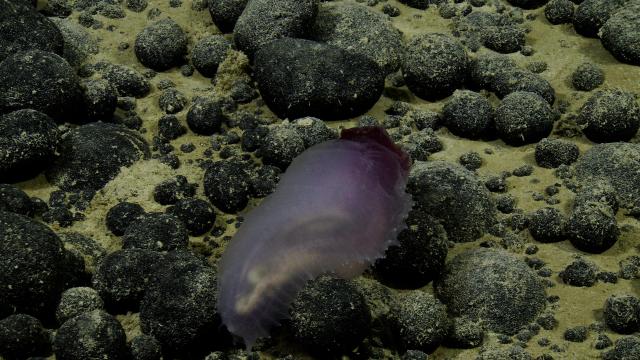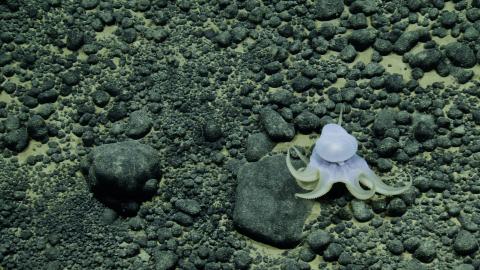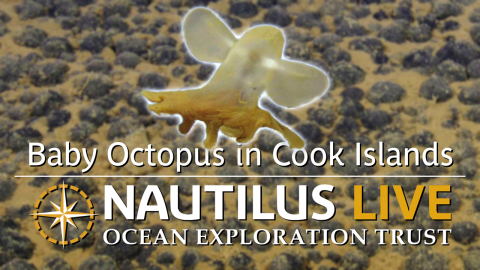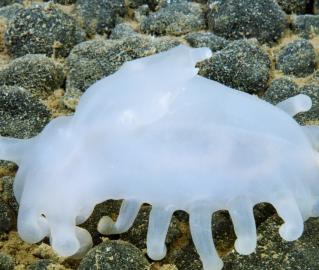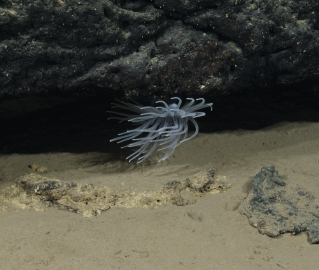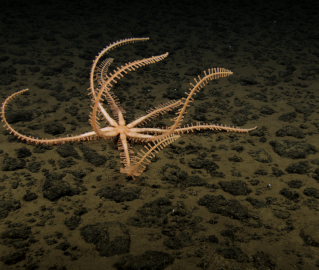Exploring the Cook Islands Deep Seabed in High Resolution Like Never Before
These are the first photos captured on Nautilus by the MxD SeaCam, a specially designed deep-sea camera created by Monterey Bay Aquarium Research Institute and DeepSea Power and Light.
For the NA176 expedition, we set out to explore the deep waters surrounding the Cook Islands, a country comprising 15 islands with an Exclusive Economic Zone (EEZ) of about 770,000 square kilometers (300,000 square miles). We have traversed various deep-sea landscapes north of Aitutaki Island, including knolls, seamounts, and nodule fields. Before our exploration, no previous deep-sea submergence dive surveys had been conducted on the abyssal seafloor in this region, and ROV Little Hercules dove the farthest it’s ever explored – a whopping depth of 5104 meters (16,745 feet). Our primary objective in the region is to survey the distribution, diversity, and density of benthic megafauna.
The organisms in these photographs were captured using the 4K imaging system on the MxD SeaCam. “MxD” is a portmanteau for a specially designed camera created in collaboration by Monterey Bay Aquarium Research Institute (M) and DeepSea Power and Light (D). This highly adept camera can operate at 7,000 meters and, via a fiber-optic interface, integrates video into an embedded telemetry system. Imageray captured by MxD results in crisp, high-resolution videos and photos. Read more about the MxD SeaCam here.
I’m this photo album, you can find just a few of our many sightings, including bamboo coral, a sea cucumber, sponges with anemones, a crinoid, a sea star, and – last but not least – an unidentified species of octopus.
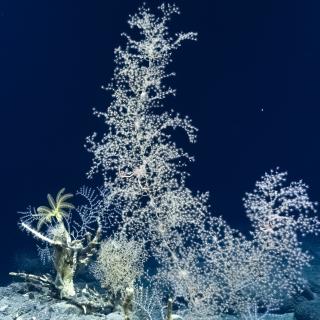
Deep-Sea Habitats of the Cook Islands
This 21-day expedition will utilize the ROV, mapping, and telepresence systems of E/V Nautilus to explore previously unsurveyed deep-sea priority areas identified by the management and science community in the Cook Islands.
